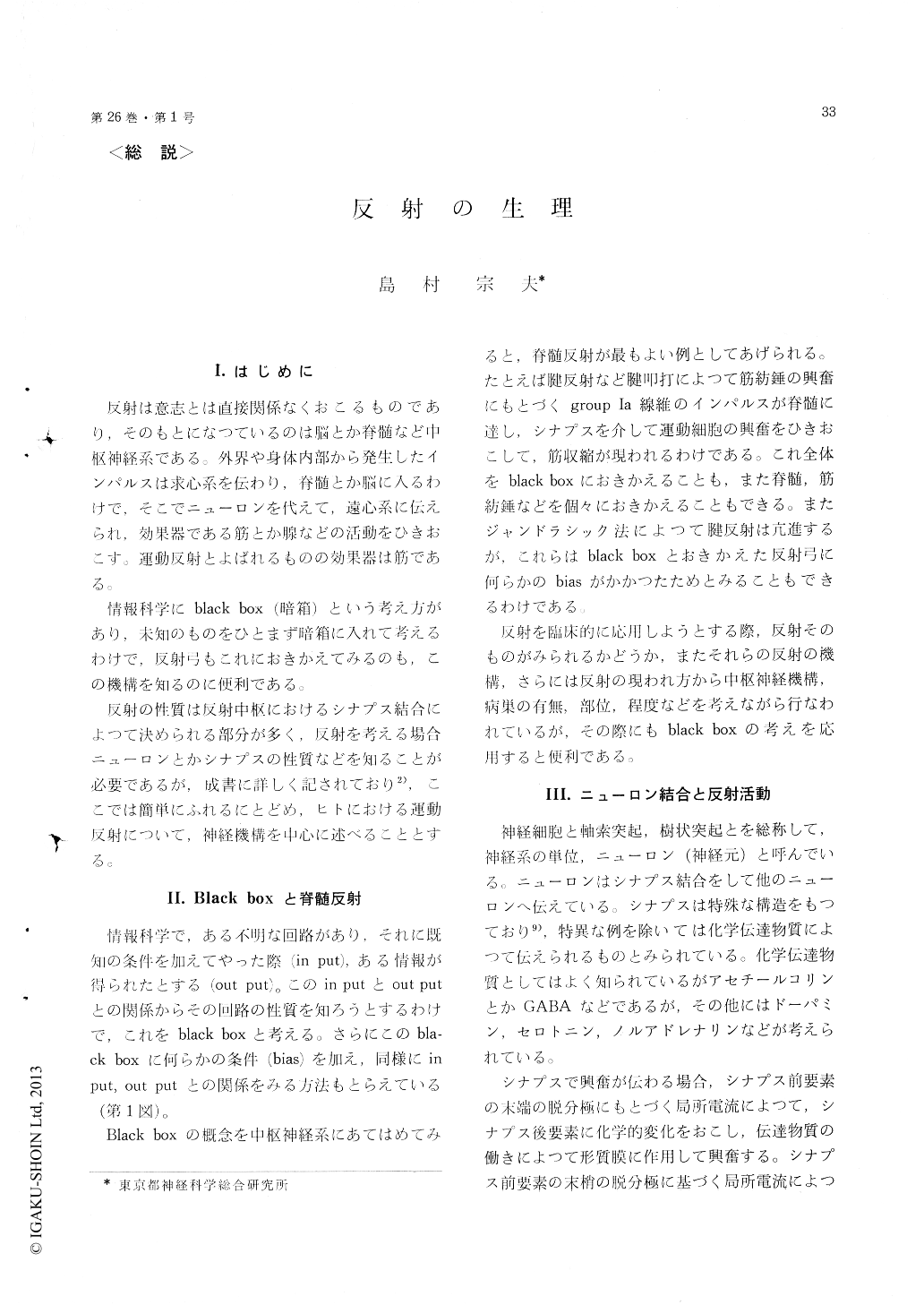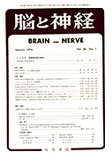Japanese
English
- 有料閲覧
- Abstract 文献概要
- 1ページ目 Look Inside
I.はじめに
反射は意志とは直接関係なくおこるものであり,そのもとになつているのは脳とか脊髄など中枢神経系である。外界や身体内部から発生したインパルスは求心系を伝わり,脊髄とか脳に人るわけで,そこでニューロンを代えて,遠心系に伝えられ,効果器である筋とか腺などの活動をひきおこす。運動反射とよばれるものの効果器は筋である。
情報科学にblack box (暗箱)という考え方があり,未知のものをひとまず暗箱に入れて考えるわけで,反射弓もこれにおきかえてみるのも,この機構を知るのに便利である。
Motor reflexes are utilized for the diagnosis of the diseases and to search for localization of the disorders in the central nervous system clinically. Reflexes involve the reflex arc, afferent, reflex center and efferent pathways. Effector of motor reflexes is muscles, which evoked muscle contrac-tion reflectly.
Human motor reflexes were not always clear to analyze in full mechanisms. Synaptic transmis-sions in the reflex centers are the most important role of the reflexes, basic patterns of the neuron net work will described briefly, in this review.
Large part of this review, several human motor reflexes summarized and analyzed spinal and, brain stem mechanism; these are as follows;
1. Comparative inter-relations between the black box and the spinal reflexes.
2. Outlibe of the neuron network of the reflexes.
3. Spinal reflexes mechanisms.
1) Tendon reflex and T wave
2) Evoked spinal reflex response, H wave
(1) Analysis of the spinal mechanisms by means of the H wave
(2) Recovery curve of the H wave
(3) Comparison of the latency between T and H wave4. Brain stem mechanisms
1) Reflexes which related the brain stem
(1) Spino-bulbo-spinal (SBS) reflex
(2) Spino-bulbo-cranial (SBC) reflex
(3) Cranio-bulbo-cranial (CBC) reflex
(4) Cranio-bulbo-spinal (CBS) reflex
2) SBS reflex of man
Startle reflex which related SBS reflex mecha- nisms
3) Human motor reflexes underlying the brain stem
(1) Palmomental reflex
(2) Blink reflex

Copyright © 1974, Igaku-Shoin Ltd. All rights reserved.


